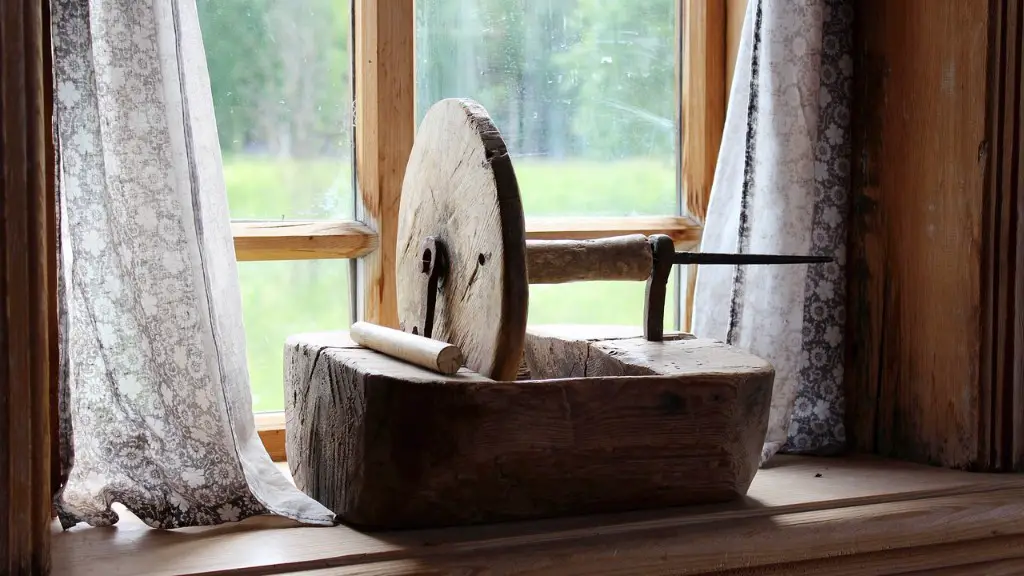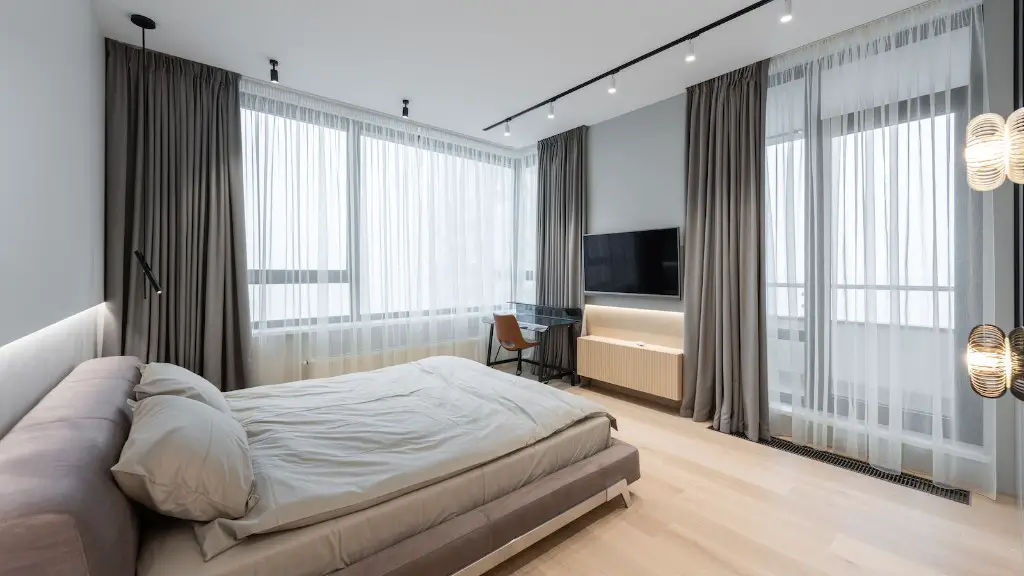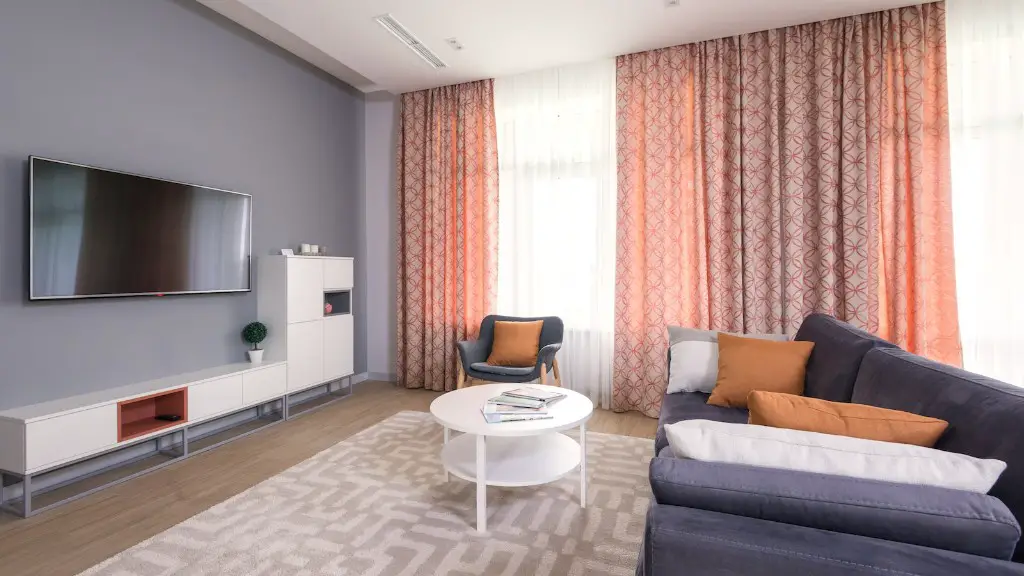When you move, do you leave curtains? This is a question that depends on personal preference. Some people feel that it is unnecessary to take curtains with them when they move, while others believe that it makes the move more difficult and stressful. There are pros and cons to both sides of the argument.
It is not required to leave curtains when you move, but you may want to if they are in good condition and fit the new space.
Are you supposed to leave curtains?
If you’ve got custom window treatments, you may want to leave them behind when you move. According to Gassett, curtains are considered personal property and are supposed to stay with the house.
If you have clothes that you don’t wear anymore, or that don’t fit you, it’s a good idea to get rid of them. You can either donate them to a charity or sell them to a consignment store. This will clear up some space in your closet and also give you a little extra cash.
Are curtains a permanent fixture
Window treatments can be a bit of a tricky subject when it comes to determining what is considered a fixture and what is not. Generally speaking, blinds and shades that are attached to the window are considered fixtures. However, drapes or curtains that can easily slide off a rod are generally considered personal property. This is something that you will want to keep in mind if you are ever in a situation where you are trying to determine whether or not something is considered a fixture.
When it comes to window treatments, it’s important to know what is considered a “fixture” and what is not. Curtains and other detachable window accessories are usually not considered fixtures, and will usually be left with the seller. However, more permanent window treatments such as curtain rods are often considered fixtures and will usually stay with the property.
Are curtains usually included in house sale?
If you’re buying a home, don’t assume that any curtains or curtain rods that are in the home are included in the sale of the home. The curtains themselves are usually considered to be personal property and are, therefore, excluded from the sale or purchase of the home.
Common household fittings include paintings, prints, and mirrors. Freestanding furniture such as beds, sofas, tables, and chairs are also common. Freestanding kitchen and utility appliances like ovens, fridges, and washing machines are also household fittings. Lampshades and TV boxes are also common household fittings.
What should you do the night before you move house?
With just a few hours to go before your big move, it’s important to take some time to prepare and get organized. Here are some last minute tips to help you enjoy a smooth and stress-free move:
1. Unplug your freezer. This will give you the opportunity to defrost it and clean it before packing it up.
2. Check your packing list. Go through your list of items to be packed and make sure you have everything you need.
3. Clean and tidy where you can. This will help you stay organized during the packing process.
4. Leave clothes out for the next day. This will help you avoid having to pack and unpack your clothes at the last minute.
Moving to a new house can be a stressful time for everyone involved. However, there are a few things you can do to make the process a little easier. First, make sure your finances are in order and that you have a clear idea of the location you’re moving to. Second, practise good habits like packing up your belongings early and staying organized. Finally, have a clear-out before you move to get rid of any unnecessary clutter. By following these tips, you’ll be sure to have a smooth and stress-free move.
What are 4 things you should do before you move in
Moving can be a stressful and overwhelming experience. However, by being prepared and organized, it can go more smoothly. Creating a moving checklist can help you keep track of everything that needs to be done. Here are some important items to include on your checklist:
-Make an inventory of everything that needs to be moved. This will help you determine what size moving truck you will need and how many boxes you will need to pack.
-Sort out and donate any unwanted clothing or furniture. This will declutter your home and make packing easier.
-Have a garage sale or list unwanted items online to get rid of them.
-Start collecting moving supplies like boxes and newspaper for wrapping.
-Submit a change of address form to your post office.
Fittings are generally assumed to be free standing items such as beds, sofas, tables, carpets, lampshades, and kitchen appliances. Curtains are also considered to be fittings, but curtain rods are considered to be fixtures.
What is the rule for curtains?
We recommend hanging curtains at least 4-6 inches above the window frame. A general rule is to have two-thirds of the space above the window covered. This allows for privacy while still letting in natural light.
If you’re looking for new curtains this year, simplicity and minimalism are the way to go. Look for curtains that are light and airy, made from classic materials like cotton and linen. These will match the light, relaxing, naturalist themes that are popular this year.
What is considered a permanent fixture in a house
If an object is physically and permanently attached or fastened to the property, it’s considered a fixture. This includes items that have been bolted, screwed, nailed, glued or cemented onto the walls, floors, ceilings or any other part of the home.
When it comes to bathroom mirrors, it is important to distinguish between those that are bolted to the wall (considered fixtures) and those that are simply hanging on the wall (considered personal property). This will determine whether or not the mirror will be included in the sale of the home. In general, if a bathroom mirror is bolted to the wall, it is considered a fixture and will come with the house. However, if a decorative mirror is simply hanging in the bathroom, it is considered personal property rather than a fixture, and the seller can take it with them.
Do you leave shelves when moving?
This is a general rule for most built-in furniture or items in a home. If they are not built-in, they would not convey unless otherwise specified. This would include items such as bookshelves, desks, benches, or entertainment centers.
Location:
– If a home is located in a high-crime area, or in an area that is rapidly declining, it will be very difficult to sell.
-Proximity to desirable amenities (e.g. schools, public transportation, parks, etc.) is a key factor in desirability and, ultimately, sellability.
Low Ceilings:
-Many homebuyers are looking for an airy and open feel in their homes. Low ceilings can make a home feel cramped and closed off.
Difficult Floor Plans:
-A home with a difficult or unusual floor plan can be a turn-off for many potential buyers.
– Floor plans that cannot be easily modified are often a dealbreaker for those looking to purchase a home.
Poor Architecture:
– poor architecture can make a home appear dated and unappealing.
– Many homebuyers are looking for a home that has a modern feel and appeal.
Do curtains increase home value
It’s true that most drapery treatments are more a matter of taste than anything else, and as such, they may not have a major impact on a home’s resale value. However, if the draperies are high-quality and in good condition, they could still be a selling point for potential buyers. In the end, it’s up to the individual homeowners to decide whether or not to keep the existing draperies or replace them with something more to their taste.
This is a great way to save money when it comes to decorating your home. Curtain panels that are sold in individual packs are more affordable and you only pay for what you need. This is a great way to save money and time when it comes to decorating your home.
Warp Up
In most cases, people will leave their curtains when they move. However, there are some instances where people may take their curtains with them.
There is no right or wrong answer to this question, as it is entirely up to the preference of the individual. Some people may choose to leave their curtains behind when they move in order to save time or money, while others may feel that it is important to take them with them in order to maintain a sense of familiarity in their new home. Ultimately, it is up to the individual to decide what is best for them.





